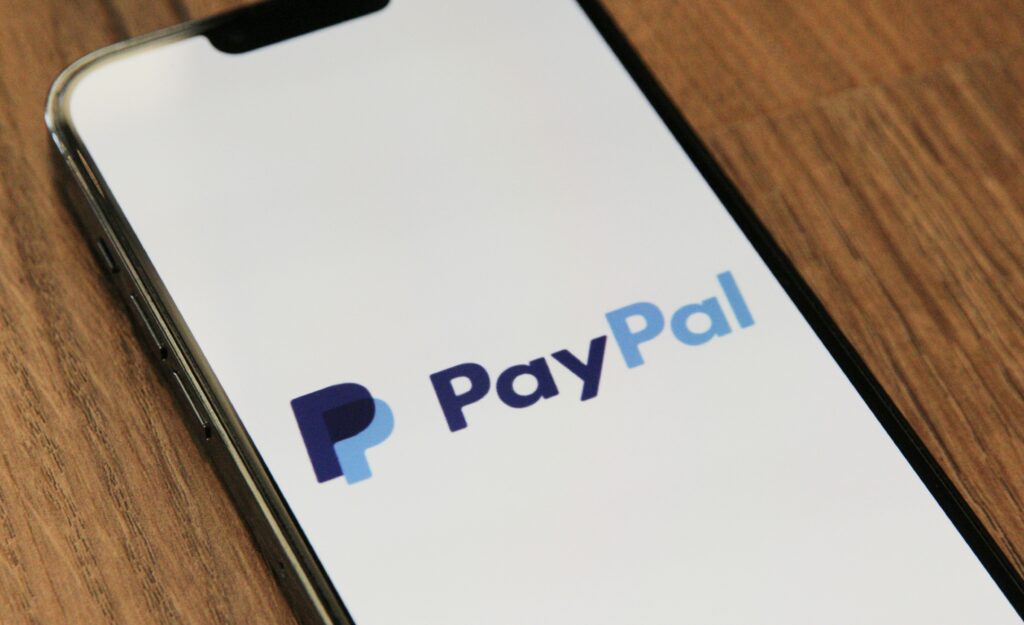Have you ever been to a party where someone told a story that had everyone leaning in, hanging onto every word? The kind of story that draws gasps, chuckles, and knowing nods?
Now, imagine that magnetic storyteller being you about your SaaS product. But what makes some stories (or in our world, messaging) resonate while others fall flat?
It’s about crafting a compelling brand messaging framework that strikes the right chord with your potential customers. It’s not enough to merely state the features of your product or its potential benefits; it’s about understanding and effectively communicating how your product overcomes the limitations of the current solutions they’re using.
1. Setting the Stage
Every great story starts with understanding its characters, their desires, and the hurdles they face. In SaaS marketing, our ‘characters’ are our potential customers, and their ‘desires’ can be equated with the use cases. The ‘hurdles’? Well, that’s the current way they’re trying to achieve those use cases.
Use Case: Beyond Mere Outcomes
When we say “Use Case,” we’re talking about the functional intent behind a user’s actions. For instance, “increasing revenue” might be a business goal, but it’s not a use case in itself.
Delving deeper, the use case could be “streamlining the sales process” or “automating repetitive marketing tasks”. In essence, the use case provides a clearer picture of what your target audience is trying to achieve functionally.
Current Way: The Path They Tread
Once we have a handle on the use case, it’s crucial to understand how our audience currently attempts to accomplish it.
- Tools & Processes: Are they using spreadsheets manually updated by a sales team? Perhaps an older CRM software? Or maybe, they’re employing a patchwork of tools that sort of, kind of, get the job done but lack efficiency.
- Inactivity Signals: If your research suggests “they aren’t doing anything” to address a particular use case, it’s a sign. Either this use case isn’t a priority, or they’re unaware of solutions that can help them. Both scenarios offer valuable insights for your marketing strategy.
Market Segmentation
Here’s a golden nugget for you: The intersection of a use case and the current way someone tries to achieve it can be viewed as a market segment.
For instance, businesses wanting to “automate repetitive marketing tasks” and currently using “generic automation tools” form a distinct segment. Identifying such segments can be a game-changer for tailoring your SaaS product’s messaging framework.
SaaS is a high risk business. Do you have the right merchant account?
2. The Art of Identifying Limitations
Imagine you’re out in the wilderness with a compass that points everywhere but north. You can still find your way, sure, but it’s going to be a lot harder.
This analogy captures the essence of ‘limitations’ in our context. Every tool or process, no matter how advanced, has inherent limitations. And, guess what? Your SaaS solution’s biggest value proposition could be addressing one of these limitations.
Limitations Are Not Always Negative
When we think of the term “limitations,” our minds often jump to negatives. However, in product marketing, understanding these limitations doesn’t always spell bad news.
For instance, consider handwritten notes. In the digital age, they may seem “slow” or “outdated,” but there’s undeniable charm and efficacy in the process. Studies have even shown that writing notes by hand can improve memory recall.
So, what might be a limitation in one context could be a selling point in another.
Zooming in on Relevant Limitations
The real trick is to pinpoint which limitation (or limitations) your product directly addresses. If your SaaS tool offers lightning-fast data analytics, then perhaps the “time-consuming manual analysis” of older tools is the limitation you counter.
When identifying these limitations:
- Look at user feedback and pain points concerning current tools and methods.
- Use surveys or engage directly with potential customers to understand their challenges.
- Monitor social media discussions and forums for real-world complaints or wishes about current solutions.
Making the Limitation Your Focal Point
Once you’ve identified a limitation, it’s time to make it a cornerstone of your brand messaging framework. This doesn’t mean highlighting the shortcomings of other tools blatantly, but subtly indicating how your solution overcomes these challenges. It’s about repositioning the narrative to focus on how your product offers a superior or more efficient way of handling things, given the current limitations.
3. Connecting the Dots: How Limitations Breed Problems
Imagine wearing a shoe that’s slightly too tight. At first, it’s just a minor discomfort, but with time, it can lead to blisters, pain, and even affect the way you walk. This is much like how limitations in tools or processes, initially seeming insignificant, can amplify into bigger problems.
It’s crucial to grasp that problems born from limitations aren’t just theoretical or abstract inconveniences. They have real-world consequences. For instance, a data analysis tool that takes a tad too long to process information isn’t just “slow.” It could mean missed opportunities, delayed responses, and even financial losses for a business.
The Domino Effect of Limitations
Every limitation has a cascading effect:
- Productivity: A tool that lacks intuitive design might require extra training, translating into hours or even days of lost productivity.
- Efficiency: If a software has compatibility issues, it might not integrate smoothly with other tools, leading to fragmented workflows.
- Morale: Continuous workarounds due to software limitations can frustrate teams, affecting morale and job satisfaction.
Spotting the Most Painful Problems
Our aim is to pinpoint the most pressing problems – those that prevent customers from achieving their desired outcomes. How?
- Engage with your target audience through surveys, feedback sessions, or even casual conversations.
- Monitor platforms where your potential customers might vent their frustrations – be it on social media, forums, or review sites.
- Collaborate with your sales team. They often have first-hand insights into the pain points of prospects.
Aligning Your Solution with the Problem
The beauty of understanding these problems is that you can align your SaaS solution (and its messaging) to be the answer. Your marketing campaigns, content strategy, and even the brand promise can emphasize how you alleviate these pain points. Remember, the most impactful value propositions are those that promise (and deliver) relief from pressing problems.
Brand messaging on point but still not converting? It could be your processor.
4. Crafting a Message That Truly Resonates
With your new blueprint in hand, it’s time to sculpt a message for your SaaS product that doesn’t just sit on a webpage but leaps out, connects, and compels.
The Cornerstones of Effective Messaging
- Emphasis on Relief: Your target audience is looking for solutions. Your marketing messaging should echo the relief your product brings against the backdrop of their pain points.
- Consistency Across Channels: Whether it’s a tweet, an elevator pitch, or a content marketing article, the core message must remain consistent. This fortifies your brand’s value in the minds of your audience.
- A Clear Differentiator: In a sea of SaaS products, what sets yours apart? It could be a unique feature, exceptional customer service, or even your brand story. Highlight it!
The Role of Templates and Frameworks
A well-crafted brand messaging framework template can be a game-changer, ensuring that every piece of content, every marketing campaign, and every social media post is on-brand, relevant, and impactful.
- Positioning Statement: This succinct statement captures your product’s unique value. It’s your product’s identity in a nutshell, something both your marketing team and sales team can rally behind.
- Messaging Pillars: These are the central themes around which your content creation revolves. For a SaaS tool, it could be “Efficiency,” “Innovation,” and “Reliability.”
- Tone of Voice & Brand Personality: Is your brand bold and disruptive? Or perhaps reassuring and wise? This persona shapes how you communicate, ensuring a distinct brand voice that your target customer relates to.
Adapting and Evolving
Finally, it’s important to understand that no messaging framework, however stellar, is set in stone. As demographics shift, as buyer personas evolve, and as market landscapes change, your messaging should adapt. Regularly revisiting and tweaking your framework ensures you stay relevant and continue to resonate.
5. Turning Insights into Actionable Strategy
With your resonating message in place, it’s time to consider how best to implement it. Crafting a compelling narrative is half the battle; the next step is ensuring it reaches and affects your audience in the right way. This is where your brand messaging strategy evolves from an idea into a powerful marketing tool.
Mapping Content to Buyer Personas
- Understanding Your Audience: Different demographics and buyer personas may have varying pain points and priorities. Segmenting your audience allows you to tailor your messaging to speak directly to their unique needs.
- Content Strategy Alignment: Utilize insights from your buyer personas to develop a content strategy that delivers the right message at the right stage of the buyer’s journey. From awareness to decision, your messaging should evolve to guide them through.
Leveraging Different Platforms
- Social Media Engagement: Platforms like Twitter, Instagram, or LinkedIn are invaluable for pushing out bite-sized, engaging content. This is your chance to be less formal and more interactive, all while maintaining a consistent brand voice.
- Content Marketing: Blogs, eBooks, and webinars can delve deeper into how your product addresses specific limitations and solves pressing problems. These pieces can also position your brand as a thought leader in your industry.
- Marketing Campaigns & Advertising: Using insights about your target audience’s habits, design campaigns that place your message front and center, be it through PPC advertising, email marketing, or even traditional media.
Feedback Loop and Iteration
- Monitoring & Analytics: Use tools to gauge how your messaging is performing. Which channels have the most engagement? Which messages resonate the most?
- Continuous Improvement: In the ever-evolving world of SaaS, stagnation is not an option. Regularly collect feedback, assess the effectiveness of your messaging, and iterate as necessary.
Empowering Your Team
Lastly, it’s crucial to remember that your messaging isn’t just for your customers. It’s also for every member of your team.
- Training & Onboarding: Ensure that everyone, from your sales team to customer support, understands and can articulate your brand’s key messages. This ensures consistency and strong brand identity.
- Creating Messaging Resources: Develop handy resources, like a messaging guide or talking points, to ensure that everyone is aligned. This not only aids in external communication but also fosters internal clarity and cohesion.
Proper data storage and collection is key. Do you have the right CRM?
6. The Evergreen Nature of Effective Messaging
Certain principles of effective messaging remain timeless, even as industries change. No matter how advanced we become, the essence of communication always traces back to human connection and understanding.
Understanding Over Selling
While your ultimate aim might be to boost sales and grow your user base, effective messaging prioritizes understanding the audience over selling to them. When potential customers feel that a brand “gets” them, trust is established, paving the way for a deeper relationship (even if it’s based solely on your tagline).
Brand Consistency in a Chaotic Digital Age
The modern digital age is an explosion of content. From blog posts to tweets, the sheer volume can be overwhelming. In this sea of information, consistency in your brand’s value, voice, and company’s mission statement becomes the anchor. It offers familiarity to your audience, making your brand recognizable and reliable.
Evolving While Staying True to Your Core
Change is inevitable. As market dynamics shift and buyer personas evolve, it’s essential to revisit and refresh your messaging. However, while the wording or channels might change, the core message — the essence of what your brand stands for — should remain steadfast.
Empathy: The Heart of Messaging
Behind every effective message, there’s empathy. By truly understanding the pain points, aspirations, and needs of your audience, you can craft content that resonates. It’s not just about showcasing your product’s features but highlighting its value in the context of the user’s world.
Bringing Your Messaging to Life
Having perfected your messaging and strategy, the next step is ensuring the mechanics behind your SaaS product align seamlessly with your user’s expectations. One key component is facilitating smooth transactions, and that’s where DirectPayNet comes into the picture.
Every interaction with your brand, including payments, should echo the value proposition and promise of your messaging. A seamless, secure, and efficient payment process not only ensures the trust of your users but also enhances their overall experience.
Advantages of DirectPayNet for Your SaaS Business
- Tailored Solutions: DirectPayNet offers SaaS-specific merchant solutions. This means your payment gateway is optimized for recurring billings, international payments, and other SaaS-specific transaction models.
- Robust Security: With increasing concerns about data breaches and fraud, it’s essential to have a partner that prioritizes security. DirectPayNet employs state-of-the-art encryption and fraud prevention systems to safeguard your revenue and your users’ trust.
- Seamless Integration: DirectPayNet’s solutions are built with the modern SaaS platform in mind. Easy to integrate, they ensure that the payment process is in line with the quality and efficiency of your product.
Your well-crafted brand messaging framework promises value, efficiency, and trust. Ensure that every touchpoint, including transactions, resonates with this promise. By opening a SaaS merchant account with DirectPayNet, you’re not just facilitating payments but enhancing the user experience, reinforcing your brand’s promise with every transaction.







